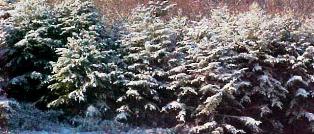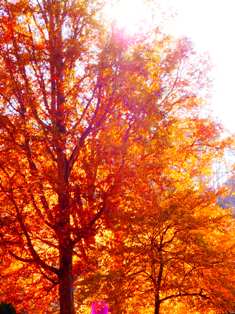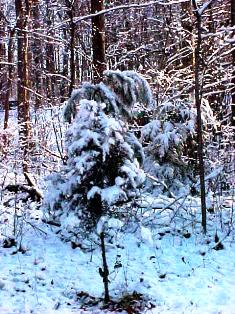|
|
Spring is a beautiful time here in the Great Smoky Mountains, however, forecasted weather conditions can be bit tricky. Temperatures can be warm, then fall rapidly. You may decide to wear shorts one day, then dress for snow flurries the next day! Temperatures in the valley can average anywhere between the low 40's to high 70's in March. April tends to have more spring-like temperatures while May stays mostly in the 70's & 80's. This area normally sees about 55 inches of rain for the whole year. Showers and severe thunderstorms are more prevalent during April and May. We have tornado watches and warnings on occasion this time of the year, however, God has been good and has spared us of a lot of destructive weather here in the Smokies. I've heard that we're actually safer in this area than most because being surrounded by the mountains serves as a hedge of protection. After hitting the mountains, storms turn in another direction. What do you think???
Summer gives way to plenty of clear skies and sunshine! The forecast weather for summer usually consists of warm days with most being around the 90 degree mark. The evenings are a bit cooler with temperatures ranging anywhere from 60 to 70 degrees in the valley. Pop-up thunderstorms are in the forecast most everyday. That's because somewhere in the East Tennessee area it's going to storm. Meteorologists have trouble detecting these cells so it's best to stay prepared. Rain gear in the trunk is always a good idea. Tornadoes and severe thunderstorms are indeed a threat, however I've lived in this area my whole life without seeing a single tornado! They do occur, and I've seen reports of severe damage, but for the most part, I think they're highly unlikely.
Fall means a forecast weather of cooler temperatures and beautiful colors! The highs normally go back into the 70's and 80's during the first part of the season, then drop to the 50's and 60's toward the end of October to mid November. The leaves normally peak around the second or third week in October depending upon the frost level. Frosting normally begins in late September in the valley. Higher elevations are colder with snow showers happening as early as late October, or early November. Since the valley doesn't get snow until mid December or January, it's fun to go up into the mountains after a snow shower and build a little snowman around your car's antenna, then drive through Gatlinburg.
Winter in the Smokies brings a chill to the air. Most winters are forecast weather as moderate in the valley with an average of about one to two snowfalls. Higher elevations receive snow measured in feet, and many times roads to the Smokies are closed due to ice and snow. Temperatures in lower elevations can range anywhere from the mid 20's to upper 50's. We have ice storms in this area, but not often. We've been known to have an occasional warm day in the high 60's to low 70's during winter, but that's the "calm before the storm" in many cases. Yep....it's a lovely warm day just before the snow storm hits!
|
|
 SPRING
SPRING SUMMER
SUMMER FALL
FALL WINTER
WINTER



